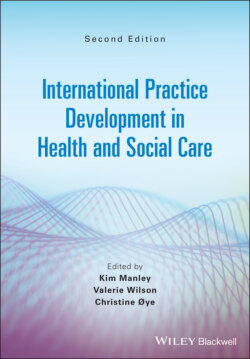Читать книгу International Practice Development in Health and Social Care - Группа авторов - Страница 43
Giselle’s experience with co‐production
ОглавлениеI am an innovation specialist for a large manufacturing company where I problem‐solve with customers through co‐creation and co‐design. I am also a mother of two children and had two empowering natural birthing experiences through the Midwifery Group Practice (MGP) at my local hospital. Through my connections with women in my community I realised that not all women had experiences like mine. They had a terrible spiel around interventions in the birth, how they were not involved in decisions about the birth and how they did not have access to midwifery‐led continuity of care. I became impassioned by the inequity in these stories and set out on a journey as a consumer advocate to re‐shape the birthing landscape for women in my area. The advocacy group Better Births Illawarra was born.
Elements of this journey that I believe were key to successful change were accurate evidence, robust engagement, commitment to the cause and seizing opportunity. We identified anecdotally that women were not gaining access to the MGP programme due to limited availability, which we believed impacted on their birth experience. We knew we needed evidence that this was an issue, so we conducted a survey of women in the area, which received overwhelming support. We reviewed the evidence in the Cochrane Library, which strengthened our argument. I thought: ‘Ok, cool, so the research tells us this is the safest, most cost‐effective model, the community wants it, there’s clearly a demand, this should be really easy, right? Maybe someone’s just overlooked this and once they see the facts, this will be sorted in less than a year.’ It would take us a further three years and persistent determination for Better Births Illawarra to achieve one of our goals.
Through an opportunistic encounter with a midwife I was encouraged to speak up. This midwife said midwives often felt powerless to voice their concerns in the system. We sought other women’s voices who wanted to ‘direct their energy into something that they believe in’. An engaged and committed group of women gathered and it felt like women stepping up to protect and support other women –future mothers. Well prepared with the focus of significant change, we presented to the maternity executive decision‐makers. We called for an expansion of the MGP in line with community demand and a refurbishment of the birth suites. We were not talking about a colour scheme change. What we wanted was the use of the BUDset tool (Foureur et al. 2010) to audit the current space and to make scientific decisions on how it could be improved to facilitate normal birth.
Our group opportunistically connected and engaged with a midwifery PhD candidate who facilitated the collation of evidence, a midwifery academic to advise on birth unit redesign, and a journalism student who published an article in the local paper titled ‘Seven out of ten miss out’. This article would be the game changer, the turning point that opened doors for our group and gained us a seat at the table as advocates for health reform. A valuable position of influence but a complex one as well; we walked a tightrope trying to build a relationship (with staff) and have a voice, to be taken seriously and to be heard. Staff were not used to working with advocates; three years later we are still working out how to effectively collaborate.
The birth unit design was completed in July 2020 after funding was provided, and Better Births Illawarra remains at the table to provide the voice for birthing women.
